Snowshoeing is an easy and affordable way to enjoy winter outdoors, whether you're exploring snowy trails, local parks, or mountain valleys. It's simple to learn, requires minimal gear, and offers a great low-impact workout. This guide covers everything you need to know to get started, including choosing the right snowshoes or modern alternatives like Snowfeet*, layering for warmth, and mastering key techniques for different terrains.
Key Takeaways:
- Gear Options: Traditional snowshoes are great for deep snow and hiking trails, while Snowfeet* (compact ski-like gear) offers more mobility and works on slopes, trails, and even urban areas.
- Clothing: Layer up with moisture-wicking base layers, insulating mid-layers, and waterproof outer shells. Don’t forget warm gloves and wool socks.
- Techniques: Snowshoeing involves a wider stance and higher steps, while Snowfeet* glides like skiing with easy stops and turns.
- Safety: Check weather forecasts, pack essentials like a first aid kit and headlamp, and avoid avalanche-prone areas.
Want to try something new? Snowfeet* combines the ease of snowshoeing with the thrill of skiing. Perfect for slopes, backyards, and urban parks, they’re portable, beginner-friendly, and work with regular winter boots. Whether you choose snowshoes or Snowfeet*, winter hiking is your ticket to snowy adventures. Let’s dive in!
Snowshoeing 101: Clothing, gear, and mistakes to avoid | How to snowshoe for beginners
Choosing the Right Snowshoes and Modern Alternatives
The gear you choose can make or break your winter adventure. While traditional snowshoes have been a go-to for years, modern options like Snowfeet* are opening up new ways to enjoy the season. Here’s a quick guide to help you pick the right equipment for your winter plans.
How to Pick Traditional Snowshoes
If you’re leaning toward traditional snowshoes, there are a few key factors to keep in mind:
- Weight Capacity: Choose a model that matches your total weight, including any gear you’ll be carrying.
- Terrain Type: Recreational snowshoes work best for flat or gently sloping trails, while mountaineering models are built for steep, icy terrain.
- Frame Size: Larger frames are better for deep snow, while smaller ones are easier to maneuver.
- Boot Compatibility: Many snowshoes require specific boots to fit their bindings, so double-check what works with your setup.
Understanding these basics makes it easier to see how modern alternatives like Snowfeet* might fit into your winter lineup.
Why Snowfeet* Stands Out

Snowfeet* products bring a whole new vibe to winter sports. They’re lightweight, portable, and easy to use - offering an exciting alternative to traditional snowshoes. Instead of sticking to slow hikes, you can glide, carve, and even jump with ease.
- Mini Ski Skates (38 cm): Starting at $250, these are perfect for beginners looking for a fun and simple way to get started.
- PRO Model (50 cm): At $275, this option provides more stability and control, with versatile bindings that work with most winter boots.
What really makes Snowfeet* special is how quickly you can pick it up. Unlike skiing or snowboarding, which can take weeks to master, most people find themselves gliding confidently after just a short time. It’s a hassle-free way to dive into winter fun.
Snowfeet* vs. Traditional Winter Gear: A Quick Comparison
| Feature | Snowfeet* Mini Ski Skates | Traditional Snowshoes | Standard Skis/Snowboards |
|---|---|---|---|
| Portability | Compact, fits in a backpack | Bulkier, needs more storage space | Large, often requires roof racks |
| Boot Compatibility | Works with regular winter boots | May need specific boots | Requires specialized boots |
| Ease of Learning | Quick and beginner-friendly | Takes a few tries to get used to | Longer learning curve |
| Terrain Options | Great for slopes, trails, and parks | Best for hiking trails | Primarily for ski resorts |
| Cost | $250–$775, minimal upkeep | Lower upfront cost, extra gear needed | High costs, including lift tickets and gear |
Snowfeet* is also low-maintenance. Unlike skiing or snowboarding, which often come with pricey lift tickets and specialized gear, Snowfeet* offers a one-time investment. Aside from occasional waxing or a $6 replacement strap, there’s not much else to worry about. Plus, you can enjoy them in your backyard or local park - no need for a ski resort.
With these advantages, Snowfeet* makes it easy to gear up and hit the snow with confidence and excitement.
Gear and Preparation for Winter Hiking
The right gear and preparation can turn a tough winter outing into a safe and enjoyable adventure. Whether you’re strapping on traditional snowshoes or opting for Snowfeet* products, planning ahead is essential for both safety and fun.
Clothing and Layering for Winter Comfort
Staying warm and comfortable in winter starts with smart layering. This approach lets you adjust your clothing as the weather changes, which is especially handy given the variety of U.S. winter climates - from freezing mountain passes to milder coastal areas.
Start with a moisture-wicking base layer made of merino wool or synthetic fabrics. Skip the cotton! It holds onto moisture, making you colder when wet. A snug fit helps pull sweat away from your skin.
Next, add an insulating middle layer to trap heat. Fleece jackets, down vests, or synthetic insulated layers are great options. These are easy to adjust - take one off during uphill climbs and put it back on during breaks.
Finish with a waterproof and windproof outer shell. Look for breathable fabrics that keep out snow and rain while letting sweat escape. Pro tip: Start your hike feeling a little chilly - your body heat will kick in once you’re moving.
Don’t forget about your hands and feet. Waterproof, insulated gloves and warm wool socks are non-negotiable. If you’re using Snowfeet*, you’re in luck - they pair perfectly with regular winter boots, keeping your feet warm and dry.
Snowfeet* also offers apparel that works seamlessly with your layering system, giving you practical and affordable options. Once you’ve got your clothing sorted, it’s time to check your gear essentials.
Gear Checklist for Snowshoeing and Snowfeet* Adventures
Your gear will vary depending on whether you’re using traditional snowshoes, Snowfeet*, or other winter sports equipment. Here’s a quick breakdown:
| Essential Gear | Snowfeet* Adventures | Traditional Snowshoeing | Standard Skis/Snowboards |
|---|---|---|---|
| Footwear | Regular winter boots | Snowshoe or hiking boots | Ski/snowboard boots ($200-$600) |
| Poles | Optional trekking poles | Snowshoe poles with baskets | Ski poles or none (snowboards) |
| Safety Gear | Headlamp, first aid kit, whistle | Headlamp, first aid kit, whistle | Helmet, goggles, headlamp, first aid kit |
| Navigation | Map, compass, GPS device | Map, compass, GPS device | Resort maps or equivalents |
| Emergency Shelter | Space blanket or bivy | Space blanket or bivy | Space blanket or bivy |
| Repair Kit | Replacement straps ($6) | Binding repair tools | Multi-tool, duct tape |
Snowfeet* stands out for its simplicity - less specialized gear and minimal maintenance. Just keep the straps in good shape and wax them occasionally.
No matter what gear you choose, some essentials are universal. Always pack a headlamp with extra batteries (cold temperatures drain them faster), a basic first aid kit, and a whistle for emergencies. High-energy snacks and extra water are must-haves to keep your energy up and stay hydrated, even in cold weather.
For icy trails, consider bringing microspikes or yaktrax. These handy tools give you extra traction on packed snow and ice, making tricky sections safer.
Preparing for Different Winter Conditions
Gear and clothing are only part of the equation - staying weather-aware is just as important. Winter weather in the U.S. can change fast, so check reliable forecasts before heading out. Remember, mountain conditions can be drastically different from valleys.
Be ready for temperature swings. A chilly morning might warm up under the sun, leading to slushy trails, or wind chill could make things feel much colder later in the day. Snowfeet* products shine in these mixed conditions, offering great adaptability.
If you’re venturing into the backcountry, always check avalanche forecasts. Resources like the Colorado Avalanche Information Center provide detailed updates to help you plan safer routes, even on well-traveled trails.
Trail conditions also play a role in your gear choice. Snowfeet* performs best on groomed trails and fresh powder, thanks to its edge control and maneuverability. Traditional snowshoes, on the other hand, are better for deep, unpacked snow.
Start your hike early to make the most of daylight and avoid deteriorating conditions. Stick to safer routes, avoid exposed ridges, and always let someone know your planned route and return time.
Finally, bring a reliable communication device. Cell service can be spotty in remote areas, so a satellite communicator or personal locator beacon can be a literal lifesaver. These devices are increasingly affordable and worth every penny in an emergency.
Step-by-Step Guide to Snowshoeing and Snowfeet* Techniques
Once you've picked the right gear, it's time to make the most of it. Whether you're strapping on traditional snowshoes or sliding into Snowfeet*, getting the basics down is essential for confidently tackling winter trails. Start with proper setup, then ease into the movement techniques to build your skills one step at a time.
How to Wear and Adjust Snowshoes and Snowfeet* Gear
Setting Up Traditional Snowshoes
Position your foot so your toe lines up over the pivot point - this helps distribute your weight evenly. Start by securing the toe strap, making it snug but not too tight (you should still be able to wiggle your toes). Then, fasten the heel strap around the back of your boot and click it into the binding mechanism. Most modern snowshoes come with a ratcheting system - give it a firm tug to lock it in place. Your heel should lift naturally as you walk, but the binding should feel stable, with no wobbling.
Setting Up Snowfeet* Products
For Snowfeet*, slide your boot in so your toe rests at the front edge. Pull the front strap over your toe, then secure the heel strap using the ratchet. The adjustable straps make it easy to fit different boot sizes, and the quick-release system ensures you can remove them in seconds. Before heading out, test the bindings by taking a few steps in a safe area. Pro tip: keep a spare strap ($6) in your pack, just in case.
If you're using Snowfeet* PRO (50 cm, $275) or Skiblades, the setup is the same. These longer models provide extra stability, making them great for varied terrain. They work with winter boots, snowboard boots, or ski boots, giving you plenty of flexibility.
Once you're all strapped in, it's time to practice the basics and get moving.
Basic Movement Techniques for Snowshoeing and Snowfeet*
With your gear secured, these movement techniques will help you navigate snowy trails with ease.
Traditional Snowshoeing Basics
When snowshoeing, take a slightly wider stance to avoid stepping on your own snowshoes. Lift your feet higher than you would on flat ground to clear obstacles. Keep your posture upright and relaxed, and aim for a natural walking rhythm. Trekking poles can be a big help, especially when you're just starting out.
Snowfeet* Movement Techniques
Snowfeet* are designed for a smooth, ski-like motion. Start with small, deliberate steps that allow you to glide naturally. Push off with one foot and let the other slide forward. This technique works best on packed trails or gentle slopes, giving you a taste of skiing without the hassle of long skis.
Stopping and Turning
Stopping with traditional snowshoes is simple - just plant your feet firmly. Trekking poles can help you slow down and stabilize. Turning usually requires wide arcs to avoid tangling the frames.
With Snowfeet*, stopping is more dynamic. Use a "pizza wedge" (toes inward) or drag your heels to slow down. For sharp turns, shift your weight to one foot and pivot. The compact design makes quick direction changes easy and intuitive.
Tips for Navigating Different Terrain
Once you're comfortable with the basics, you can tackle a variety of terrains. Here's how to adapt your techniques for different conditions.
Flat and Packed Trails
On flat, groomed trails, traditional snowshoes provide excellent flotation, keeping you above deeper snow. Snowfeet* excel on packed snow and well-maintained paths, thanks to their quick maneuverability. The adjustable straps make it easy to navigate around obstacles like fallen branches or other hikers.
Uphill Techniques
For traditional snowshoes, the kick-step method works well on powdery inclines: lift your foot, kick your toe into the snow to create a step, and plant your crampons firmly. On moderate slopes, try the herringbone step - turn your snowshoes outward at a 45-degree angle for better grip.
Snowfeet* also handle uphill climbs efficiently. Their shorter length reduces drag, making it easier to side-step or tackle short switchbacks. The skiing-like motion adds a natural feel to climbing.
Downhill Navigation
When descending with snowshoes, lean back slightly, bend your knees, and use trekking poles for balance. Land heel-first to engage the crampons for better grip.
Snowfeet* offer more control on descents. Use gentle turns to manage your speed, or apply a pizza wedge for quick stops. For steeper slopes, the step-sliding technique - leaning back with your weight on your heels and taking longer strides - can help you stay in control.
Traversing and Side-Hilling
To move across a slope with snowshoes, press the uphill side of each shoe into the snow to create a stable surface. Keep most of your weight on the uphill snowshoe, and extend your downhill pole slightly for balance.
With Snowfeet*, traversing is easier. Their compact, ski-like design allows for natural edging, so you can maintain a steady rhythm and make quick adjustments when needed. This makes side-hilling less tiring and more efficient, even on tricky terrain.
sbb-itb-17ade95
Safety, Comfort, and Trail Etiquette
Staying safe and courteous on winter trails is key, whether you're out with traditional snowshoes or trying out Snowfeet*. A little awareness and respect for others can make the experience better for everyone.
Trail Etiquette for Snowshoeing and Snowfeet* Users
Yield the Right of Way
Skiers, snowboarders, and snowshoers ahead of you always have the right of way. Keep a safe distance and stay in control to avoid any accidents:
"Skiers, snowboarders, and snowshoers in front of you generally have the right of way. Maintain a safe distance and stay in control to avoid collisions".
Stay Aware of Your Surroundings
Before heading downhill or merging onto a trail, take a moment to check uphill. Make sure no one’s barreling toward you:
"Before starting down a hill or merging onto a trail, look uphill to ensure no one is approaching".
Stop Smart
Avoid stopping in spots where others might not see you, like the middle of a trail or just below a drop-off:
"Never stop in the middle of a trail or in any location where you cannot be seen from above, such as below a drop-off".
Follow Trail Rules and Signs
Stick to the marked trails and boundaries. Closed areas are usually off-limits for a reason - whether it’s safety concerns or protecting wildlife:
"Stay on marked paths and designated boundaries. Avoid venturing into closed areas that could be dangerous or disturb wildlife".
Be Environmentally Conscious
Help preserve the beauty of the trails by staying on designated paths and choosing eco-friendly transport options when possible.
Communicate and Coordinate in Groups
When snowshoeing or using Snowfeet* with a group, clear communication is essential. Stick together, make sure everyone knows the route, and look out for each other. Snowfeet* users, with their easy-to-use connection systems, can especially benefit from planning ahead:
"If snowshoeing or using Snowfeet* in a group, communicate clearly with other participants and respect one another. Stay together and ensure everyone knows the planned route".
Winter Terrains and Destinations
When you’ve got the right gear, winter adventures can take you far beyond the usual flat trails. Winter hiking opens up a world of terrains, from peaceful forest paths to rugged mountain slopes. Whether you’re sticking with classic snowshoes or trying out Snowfeet* products, the terrain you choose can make all the difference in creating a memorable experience.
Top U.S. Winter Hiking Destinations
Rocky Mountain National Park, Colorado
This park delivers some of the most stunning winter views in the U.S. Trails like Bear Lake and Sprague Lake are perfect for beginners, offering gentle slopes paired with incredible mountain scenery. It’s a snowshoer’s paradise.
Yellowstone National Park, Wyoming
Yellowstone turns into an icy wonderland in the winter. Its trail network is ideal for snowshoeing, with geothermal features adding unique scenery and microclimates. The trail near the Grand Canyon of Yellowstone is a standout, offering jaw-dropping views without being overly challenging.
Mount Wachusett State Forest, Massachusetts
For East Coast adventurers, this forest is a gem. Rolling hills and dense woods offer trails ranging from easy 1-mile loops to tougher 5-mile treks. It’s a great spot for both traditional snowshoe fans and those trying out Snowfeet*.
Lake Tahoe, California/Nevada
Lake Tahoe is a year-round outdoor haven, and winter is no exception. With trails for all skill levels and ski resorts that often welcome snowshoers on specific paths, it’s a versatile destination. Plus, many resorts offer gear rentals, making it easy to dive into winter hiking.
Acadia National Park, Maine
Acadia offers a unique coastal winter hiking experience with breathtaking ocean views. Its well-maintained carriage roads are ideal for exploring, and the relatively mild winter temperatures make it a comfortable choice for cold-weather hiking.
Snowfeet* Works Across Different Terrains
These destinations highlight the endless possibilities when you have versatile gear like Snowfeet*. While traditional snowshoes are built for flatter, snowy trails, Snowfeet* products let you do so much more. These short skis are perfect for carving turns on ski slopes or tackling steeper terrain that snowshoes just aren’t made for.
Backyards and Local Parks
Snowfeet* Mini Ski Skates are a game-changer for backyard fun or quick trips to the local park. Unlike bulky snowshoes, these compact 38 cm skates fit neatly in a backpack, making it easy to enjoy spontaneous winter adventures.
Hiking Trails
Snowfeet* shines on hiking trails. The Snowfeet PRO (50 cm) model, for instance, offers excellent flotation on soft snow while remaining nimble enough for tight switchbacks or tree-lined paths. You’ll glide along smoothly instead of the slower, deliberate steps snowshoes often require.
Ski Resorts
Many ski resorts welcome Snowfeet* users on beginner and intermediate slopes. Models like the Skiskates (44 cm) and Skiblades (65 cm) excel on groomed runs, giving you access to chairlifts and mountain terrain that traditional snowshoes can’t handle.
Urban Environments
Snowfeet* products work surprisingly well in urban settings, too. Whether you’re navigating a snowy park or steep streets, these models handle transitions between cleared sidewalks and snow-covered areas with ease, making city exploration a breeze.
Comparison of Terrain Flexibility
| Terrain Type | Snowfeet* Products | Traditional Snowshoes | Standard Skis/Snowboards |
|---|---|---|---|
| Hiking Trails | Excellent – smooth gliding, easy turns | Good – built for these terrains | Poor – too long and cumbersome |
| Ski Slopes | Excellent – full access with chairlifts | Not allowed – safety restrictions | Excellent – designed for slopes |
| Backyards/Parks | Excellent – compact and maneuverable | Fair – bulky in small spaces | Poor – needs lots of room |
| Steep Terrain | Very Good – better control on uneven ground | Limited – mainly for flat areas | Excellent – built for steep slopes |
| Tight Spaces | Excellent – short length for tight turns | Poor – wide profile limits movement | Very Poor – hard to maneuver |
| Urban Areas | Very Good – easy snow-to-sidewalk shifts | Fair – awkward on hard surfaces | Poor – risks damage on hard ground |
| Powder Snow | Good to Excellent – model-dependent | Excellent – maximum flotation | Good – skill needed in deep snow |
Snowfeet* gear proves its versatility when you think about a typical winter day. Start your morning hiking through forest trails, grab lunch at a ski lodge you reached via chairlift, and then glide through a snowy park before heading home.
These products are also built to handle various snow conditions - whether it’s soft powder, packed trails, or even icy patches. For example, models like the Skiblades are designed to improve traction on slippery surfaces, giving you confidence in trickier spots.
What makes Snowfeet* stand out is how they simplify your gear needs. Instead of packing separate equipment for snowshoeing, skiing, or exploring urban areas, Snowfeet* offers an all-in-one solution. They’re especially great for beginners looking to explore a mix of terrains without the hassle of multiple setups. With Snowfeet*, every winter landscape becomes your playground.
Conclusion: Start Your Winter Adventures with Snowfeet*
Now that you’ve got the lowdown on gear and techniques, it’s time to hit the snow and make some memories.
Winter hiking is all about the thrill of exploration, and Snowfeet* brings a fresh twist to your adventures with their easy-to-use, versatile designs. Whether you’re looking for something compact or built for performance, they’ve got you covered.
Take your pick: the 38 cm Mini Ski Skates, starting at $250, are perfect for portability and quick trips. Or, if you’re after a bit more versatility on varied terrain, the 65 cm Skiblades are a solid choice.
Snowfeet* makes it simple to build confidence on the snow and explore all sorts of winter wonderlands. From casual strolls on local trails to tackling more daring slopes, these products turn the snowy season into your personal playground.
FAQs
What makes Snowfeet* different from traditional snowshoes for winter hiking?
Snowfeet* bring a fresh twist to winter sports by offering a lightweight alternative to snowshoes, skis, and snowboards. Forget lugging around bulky gear - these compact little wonders are easy to carry and perfect for spontaneous snowy outings. Plus, they’re designed to pair with your regular winter boots, so you won’t need to invest in any special footwear.
Unlike traditional skis or snowboards that come with heavy bindings and require specific boots, Snowfeet* strip things down to the essentials. You can glide across the snow, hike through trails, or just explore the winter landscape with ease. Their portability and simplicity make them a great pick for both first-timers and seasoned adventurers looking for something different.
How do I pick the right size and model of Snowfeet* for my winter adventures?
Choosing the right size and model of Snowfeet* is easy! Just adjust the heel strap to fit the length of your boots snugly. Make sure the rear binding sits close to your heel without slipping underneath your boot. This setup gives you the best mix of comfort and performance for all your snowy adventures.
What safety tips should I follow when using Snowfeet* on different winter terrains?
To stay safe while using Snowfeet* on winter terrains, always share your plans with someone you trust. Let them know your route and when you expect to return. Also, it’s best to avoid venturing out on your own. Winter landscapes can be unpredictable, so watch out for icy patches, hidden obstacles, frostbite, and hypothermia. Dress smart - layer up with warm, moisture-wicking clothes - and don’t forget the essentials: water, snacks, and a first aid kit.
If you’re heading into avalanche-prone areas, pack the right safety gear. This includes an avalanche transceiver, a probe, and a shovel. More importantly, make sure you know how to use them. Snowfeet* gear offers more control and flexibility than traditional skis or snowboards, but staying alert to your surroundings and weather conditions is the real key to a safe and fun adventure.
Related Blog Posts
- Intro to Light Backcountry: Essential Gear for Exploring Beyond the Groomed Trails (Without the Pro Setup)
- First Backcountry Ski Tour: What to Expect (Step-by-Step Walkthrough)
- Nordic Skis vs. Snowshoes: Which Is Better for Winter Adventures?
- What Are Snowshoes and How Do They Work? (2025 Beginner’s Guide)





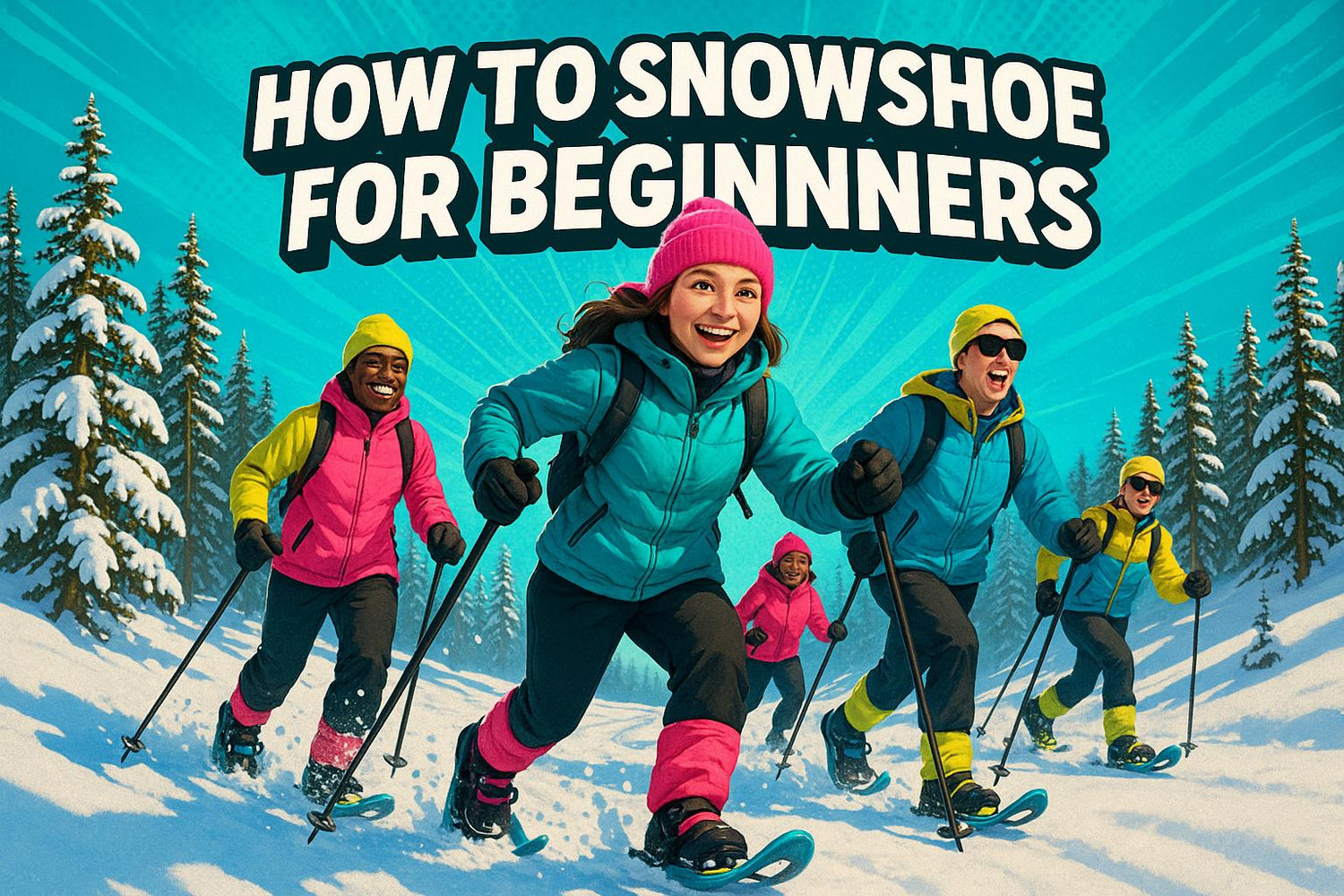

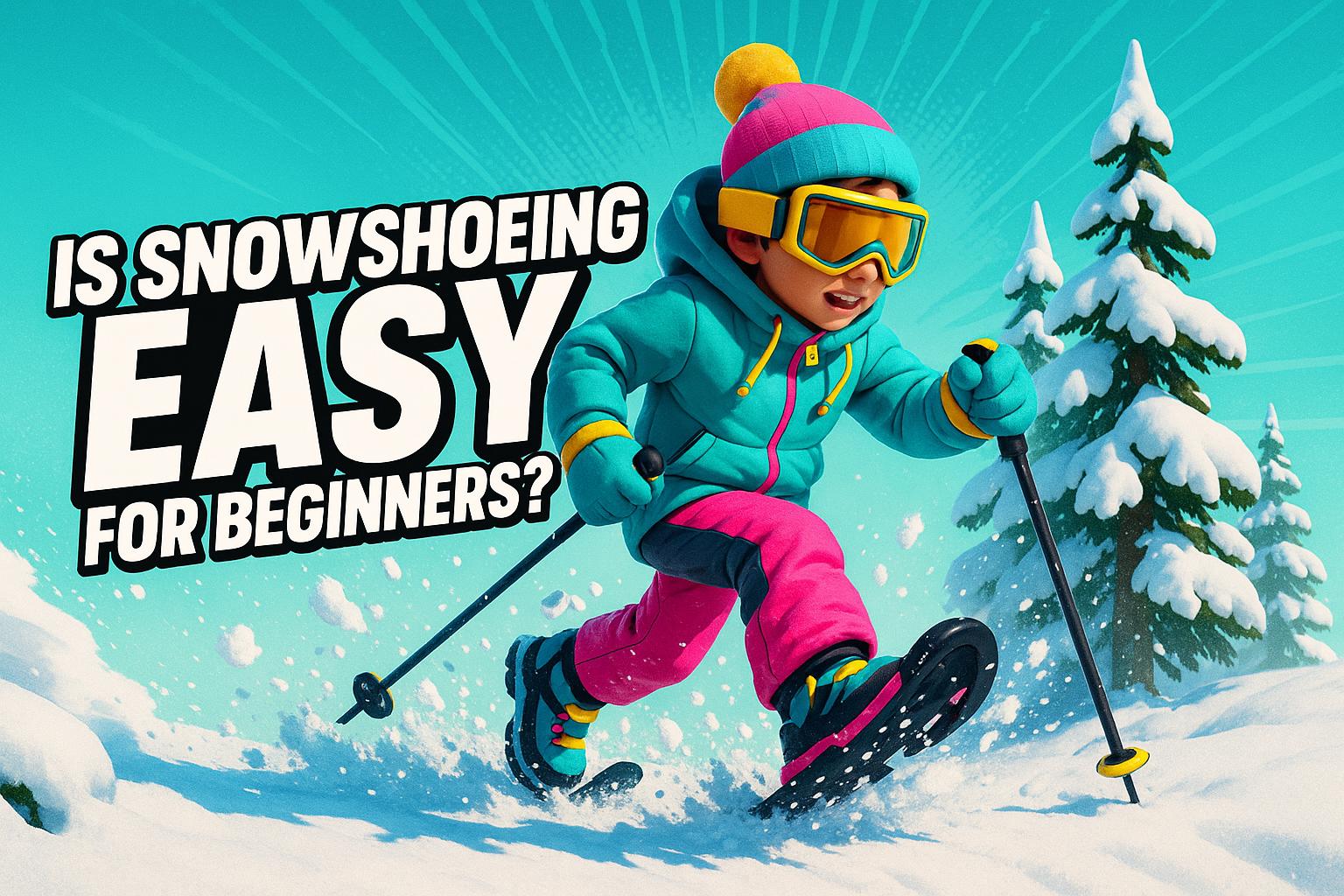




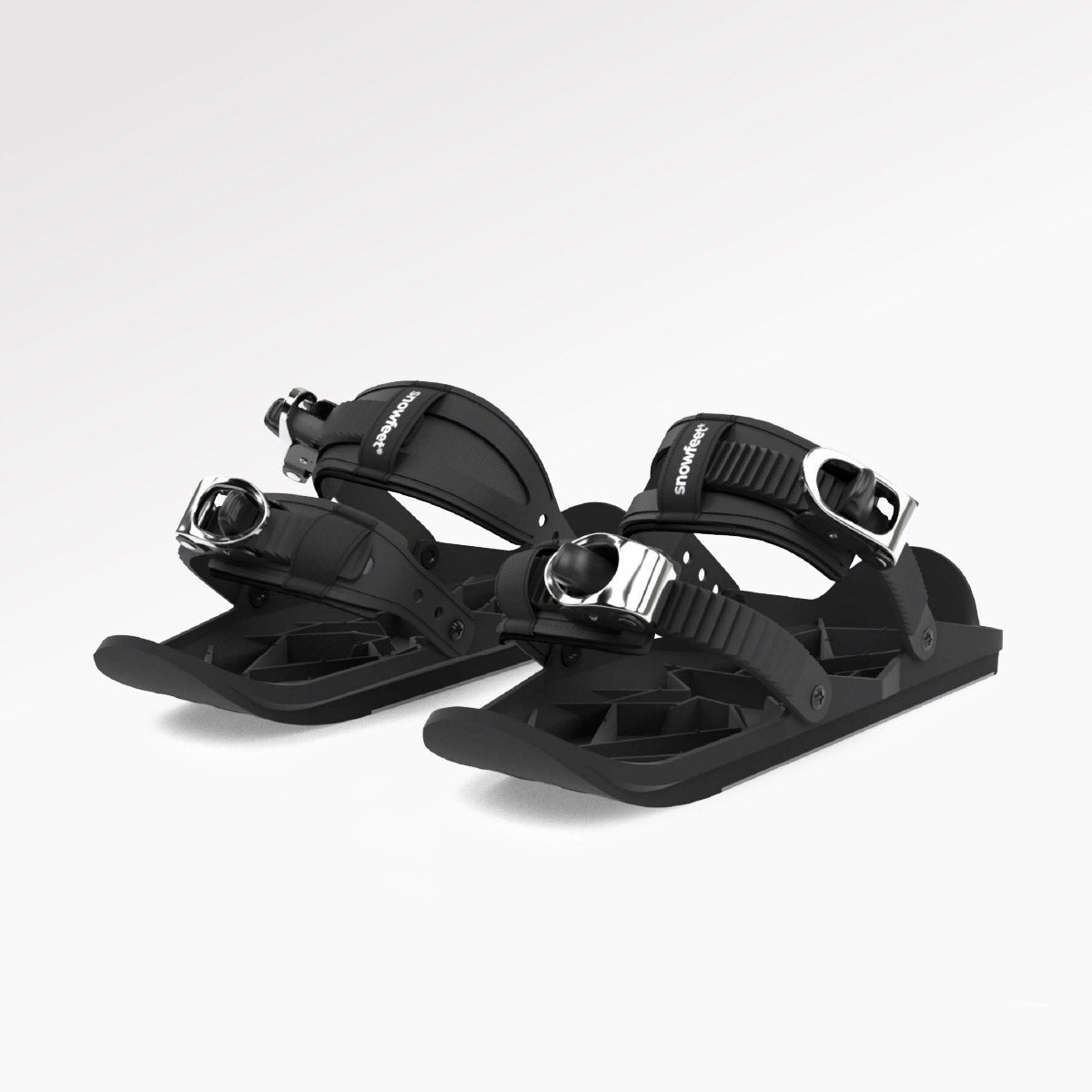
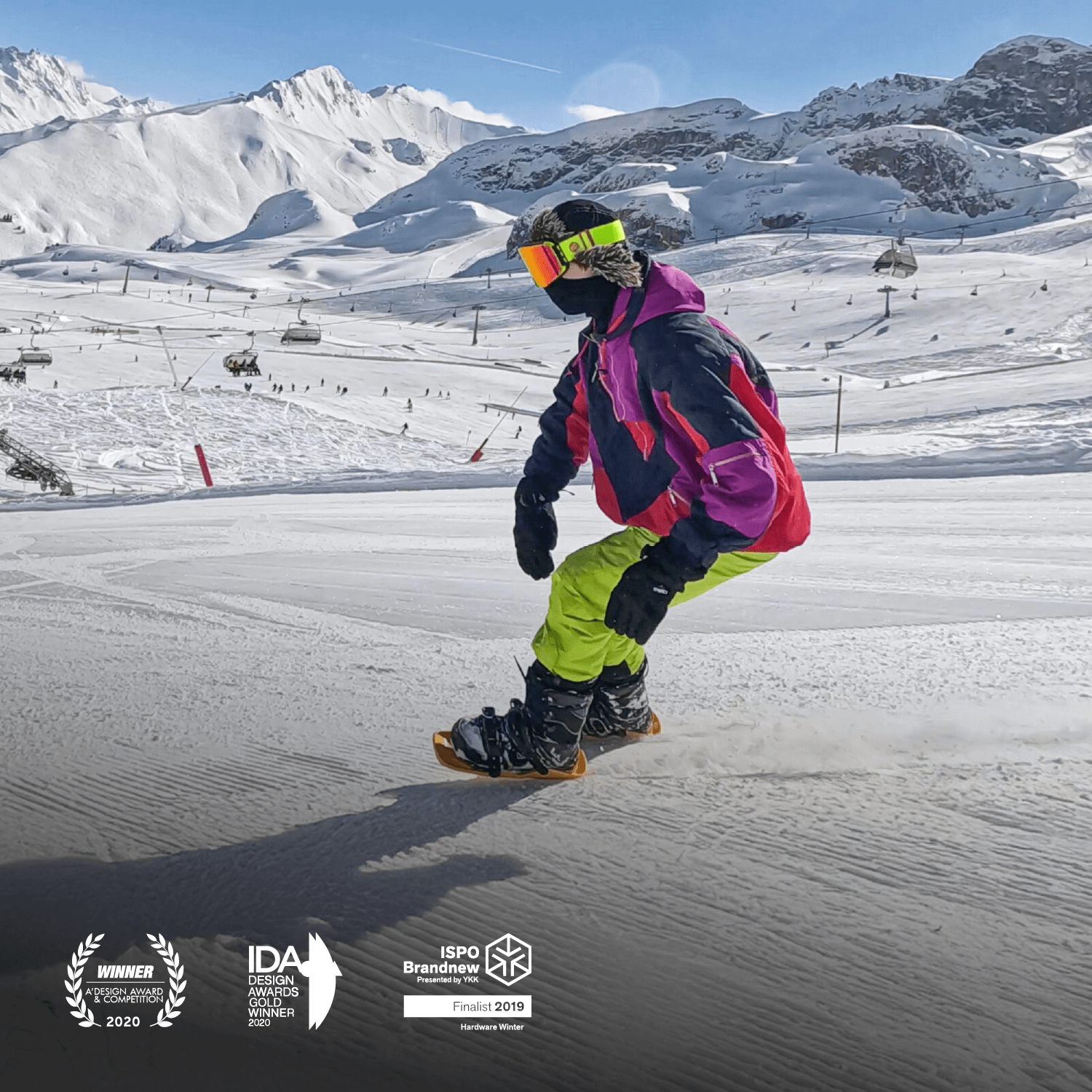
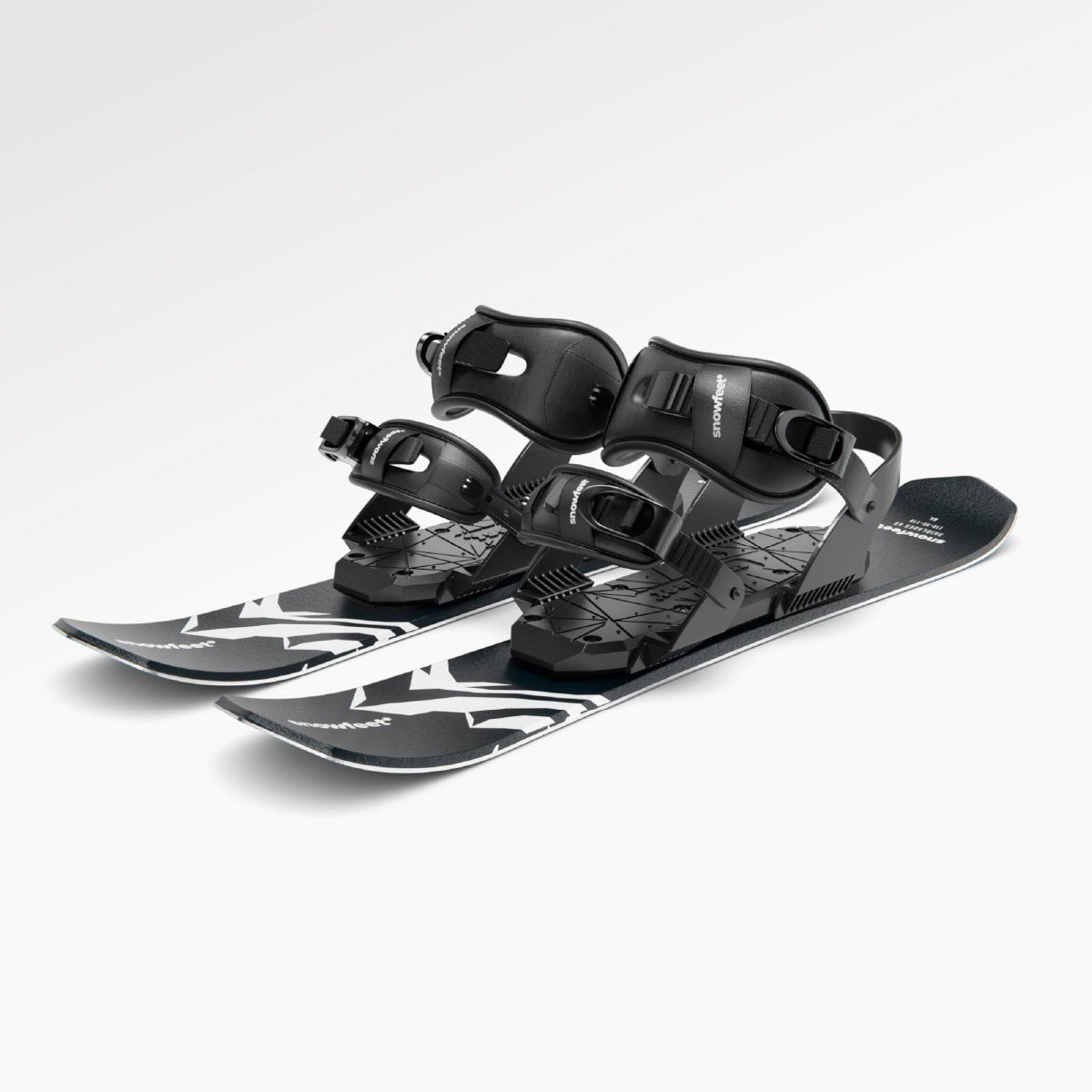

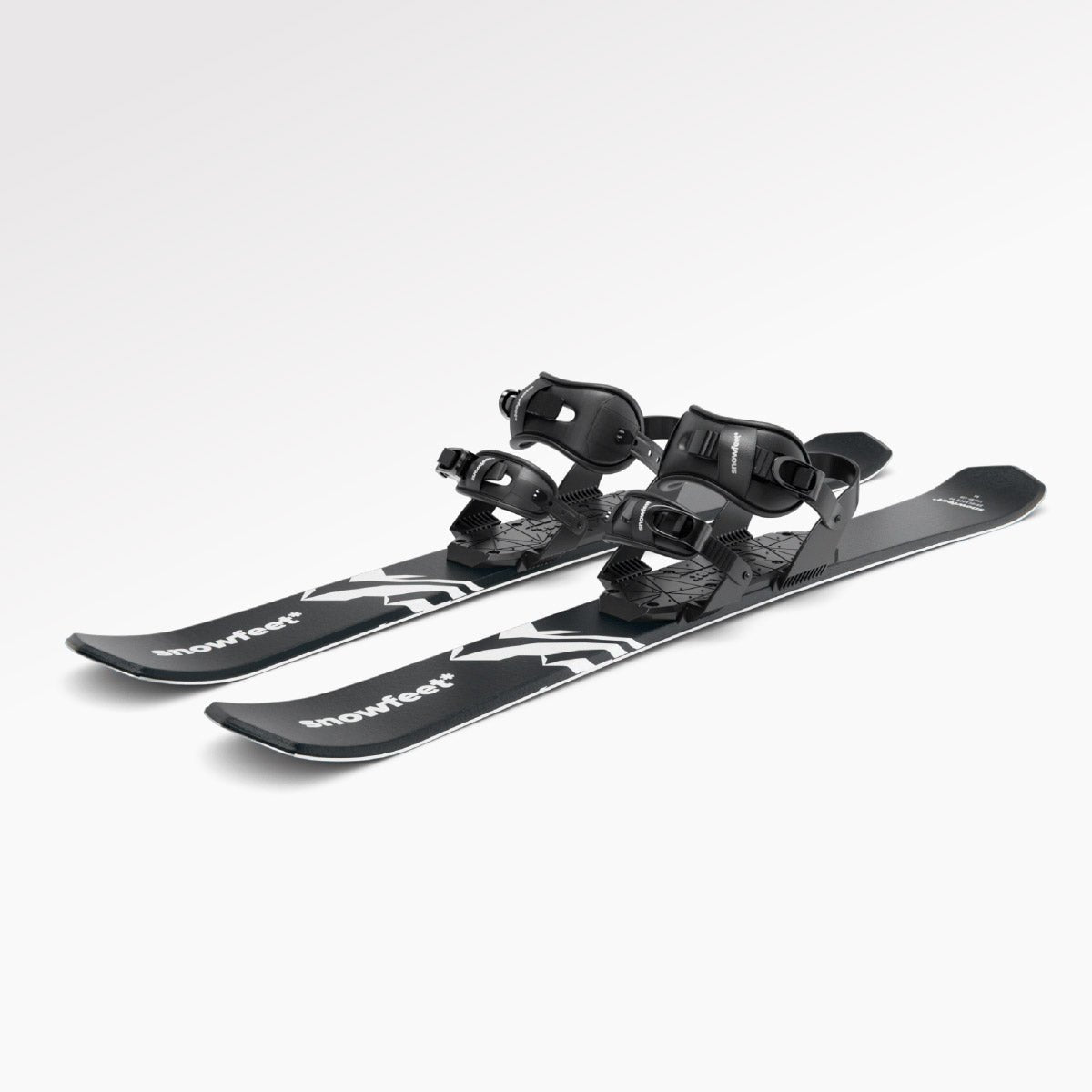

Zanechte komentář
Tento web je chráněn službou hCaptcha a vztahují se na něj Zásady ochrany osobních údajů a Podmínky služby společnosti hCaptcha.